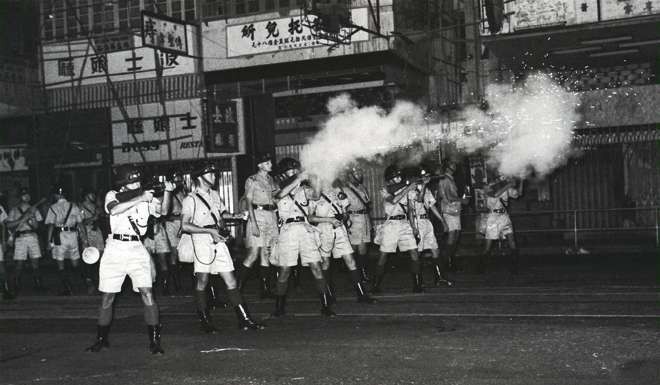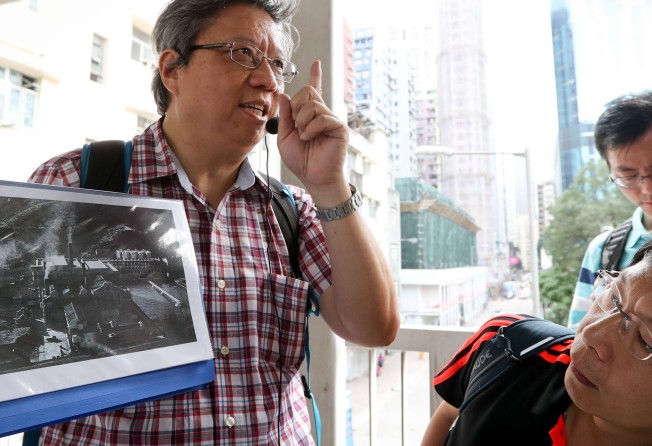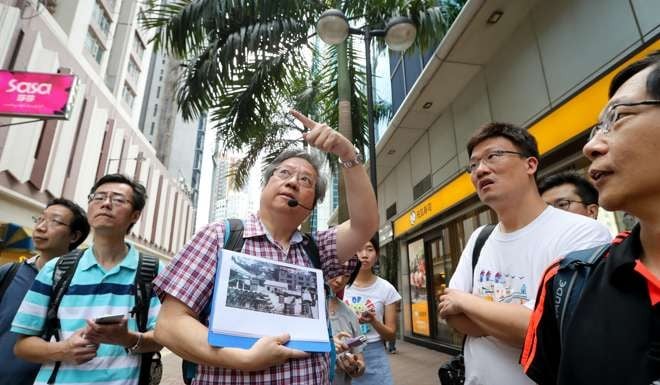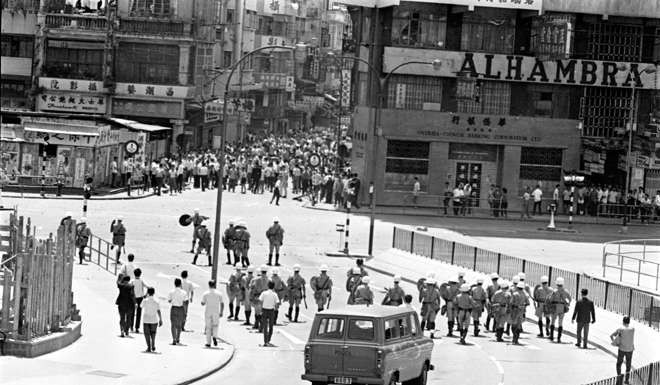
Should history lessons in schools include details about Hong Kong’s 1967 riots?
Tour of places at heart of unrest held as some expound on importance, yet survey reveals teachers’ doubts over balance in new syllabus

Did you know a bomb once exploded on Ching Wah Street, a residential area in North Point, killing two young children?
Or that a raid on a King’s Road building involving about 2,000 British soldiers and police, some of whom landed on the roof by helicopter, led to the arrest of more than 20 people?
The incidents from the 1967 riots were just two recalled at a recent study tour by the Professional Teachers’ Union. Educators believe these historical facts are integral to youngsters’ understanding our society today.

The tour, involving about 20 teachers from secondary schools and universities, was held before consultation on a revised junior secondary Chinese history curriculum ends on Sunday.
Last month, the Education Bureau announced the proposed syllabus would include topics from Hong Kong’s history, but it failed to give full details on what would be included.
Chinese history teacher Chen Yan-kai, who helped organise the tour and related lectures, believes it is essential to know about the riots to understand the current state of Hong Kong society.
He said many students nowadays are unaware of the riots.

Such topics are currently only included in the appendix section of Chinese history textbooks, and covered briefly in lessons.
PTU vice-president of internal affairs Chong Yiu-kwong, a senior teaching fellow at the Education University, said the tour helped prepare teachers for next year’s 50th anniversary of the riots.
Cheung Wong, a teacher from the CCC Kei Chi Secondary School, Kwun Tong, said he managed to learn a lot from the tour led by Japanese and Chinese relations researcher Hau Ching-yee, and Post political editor Gary Cheung Ka-wai, who is also the author of a book on the riots.
“I teach history and liberal studies and these are things we do not learn from our curriculum,” Cheung Wong said, adding he only found out more about the riots in university when he majored in history.
As a Hongkonger, he believes people need to clearly understand what happened in the city during such important events.

“One way to resolve the differences is to understand some truths and facts of the past so that society can develop healthily,” he added.
The riots were triggered by a labour dispute in April 1967 at an artificial flower factory in San Po Kong. The incident escalated after the leftist camp and mainland officials stationed in Hong Kong seized the opportunity to mobilise followers and protest against the colonial government.
The riots lasted until December, claiming 51 lives, including 15 in bomb attacks.
Separately, a PTU poll of 178 Chinese history teachers revealed yesterday that half believe the new curriculum will have a negative effect on improving the teaching and learning of the subject.
For example, 55 per cent believe the new syllabus will place greater emphasis on unity and neglect negative aspects.